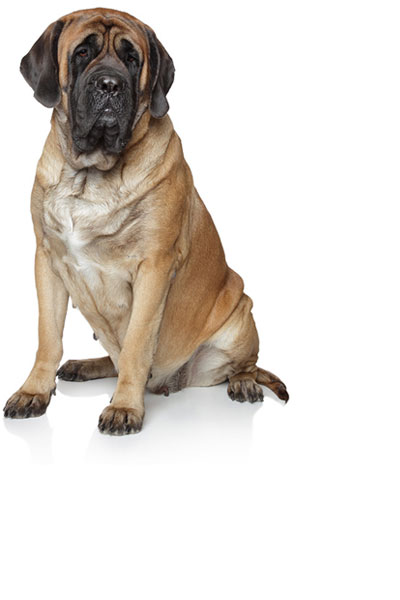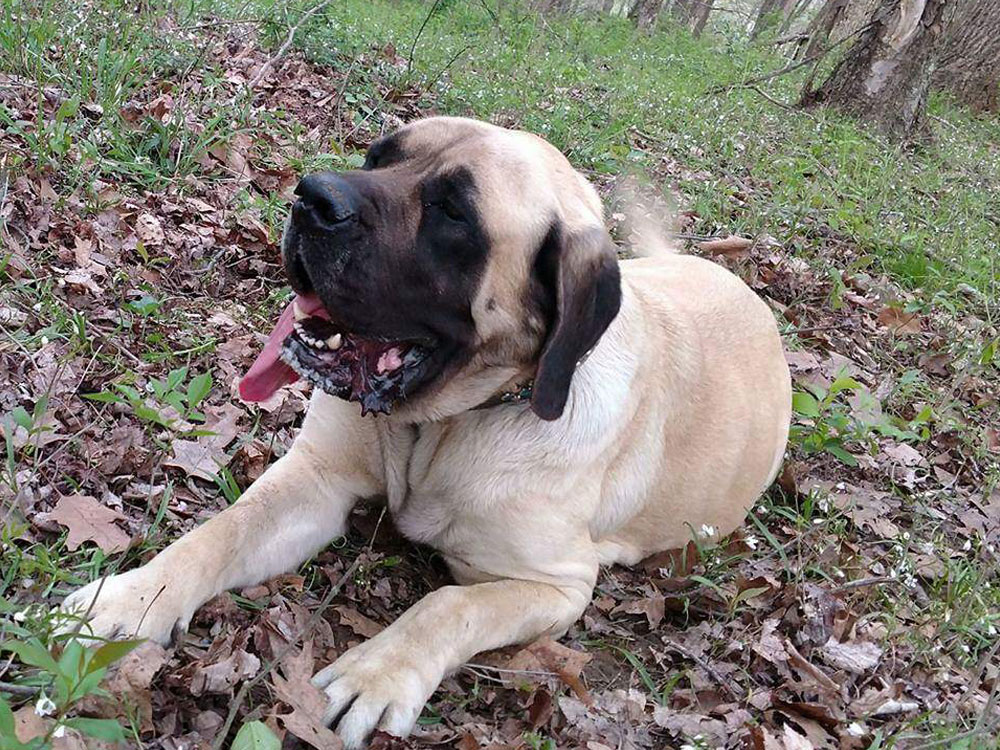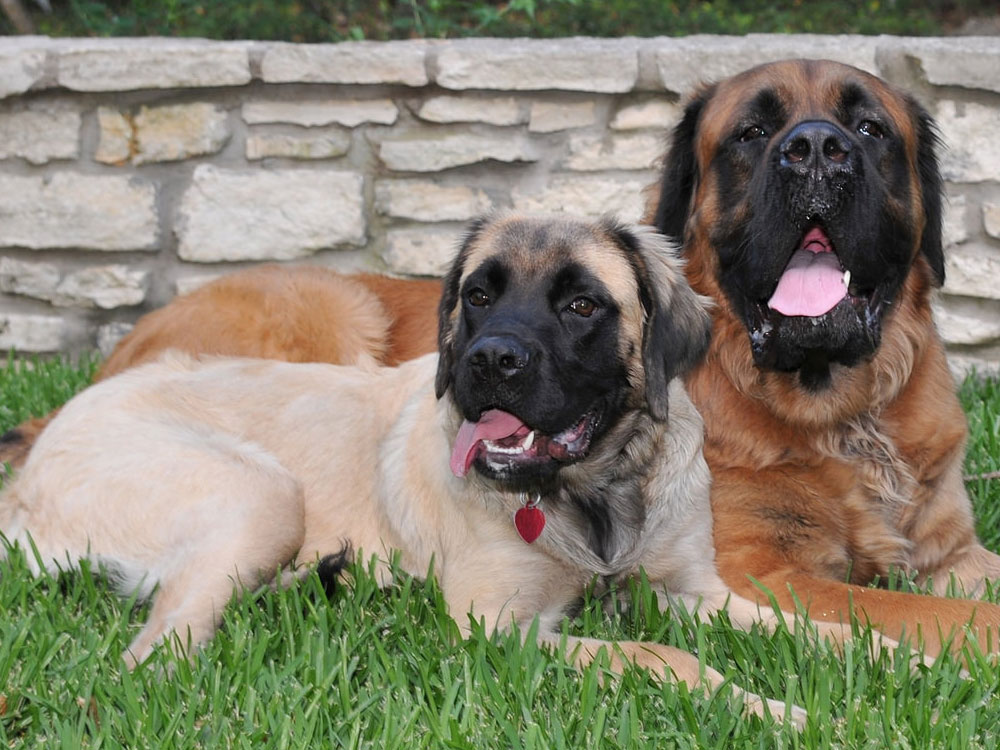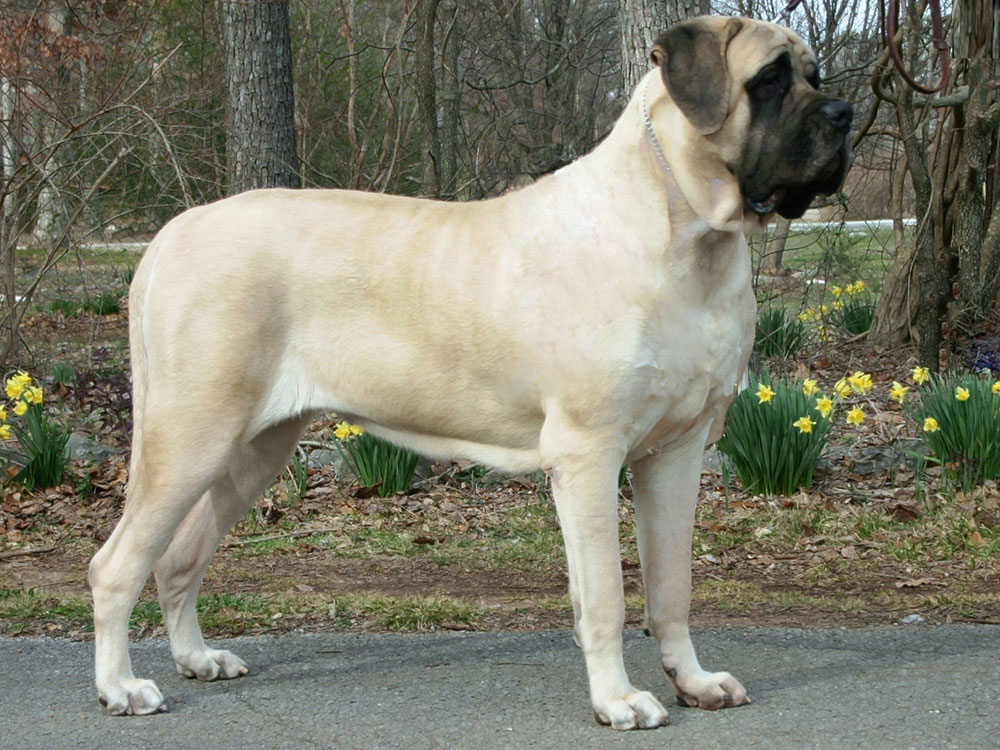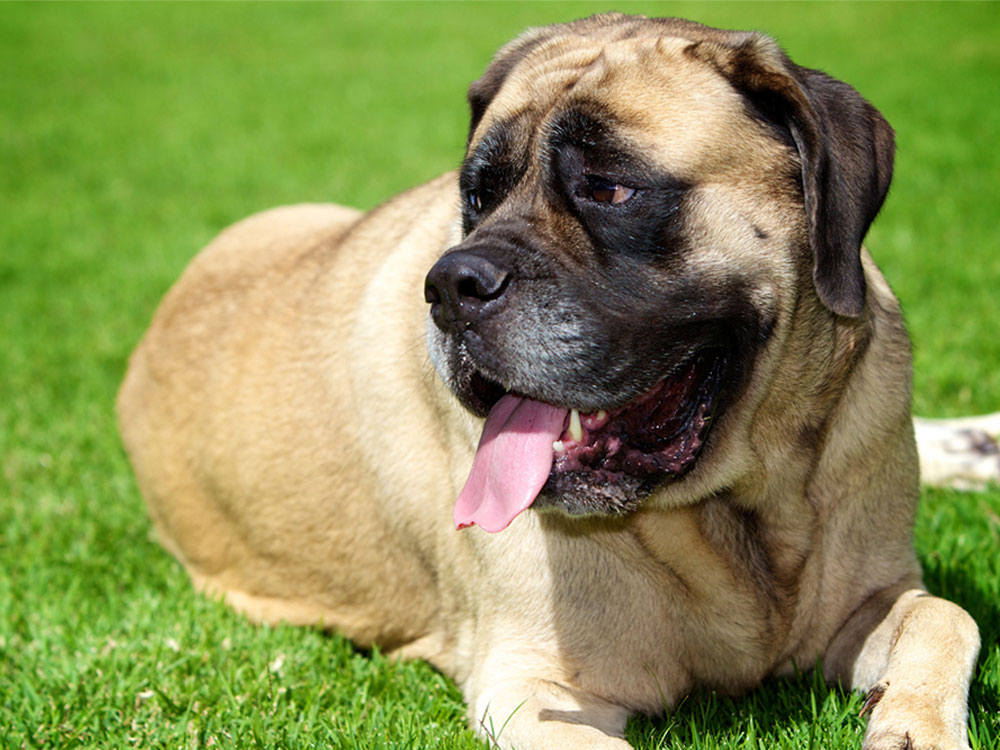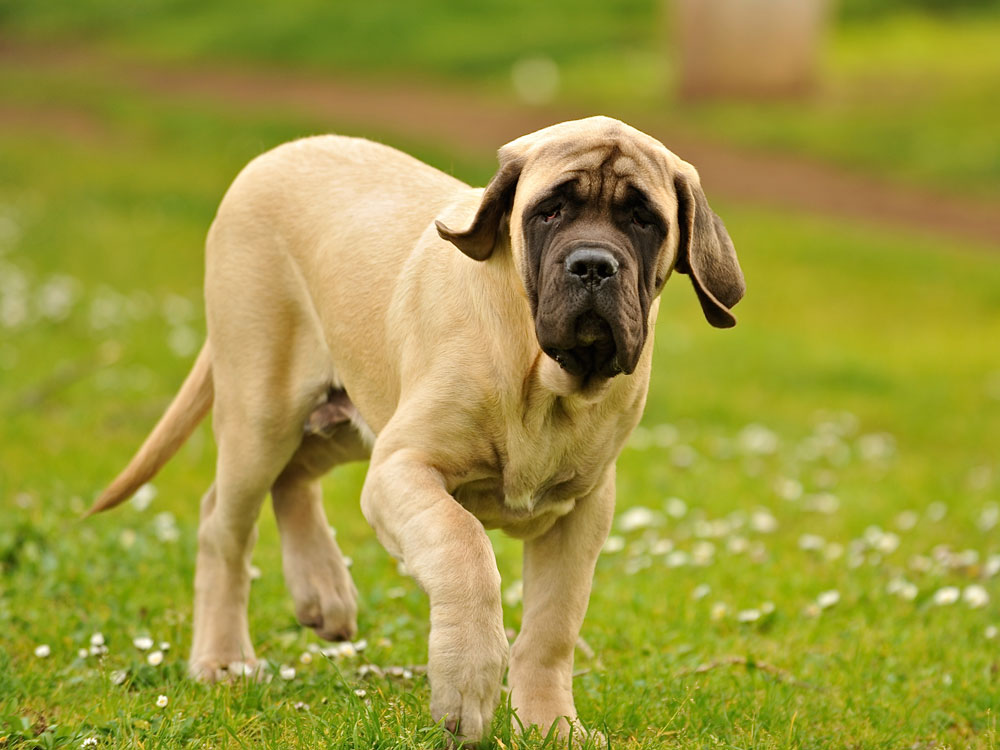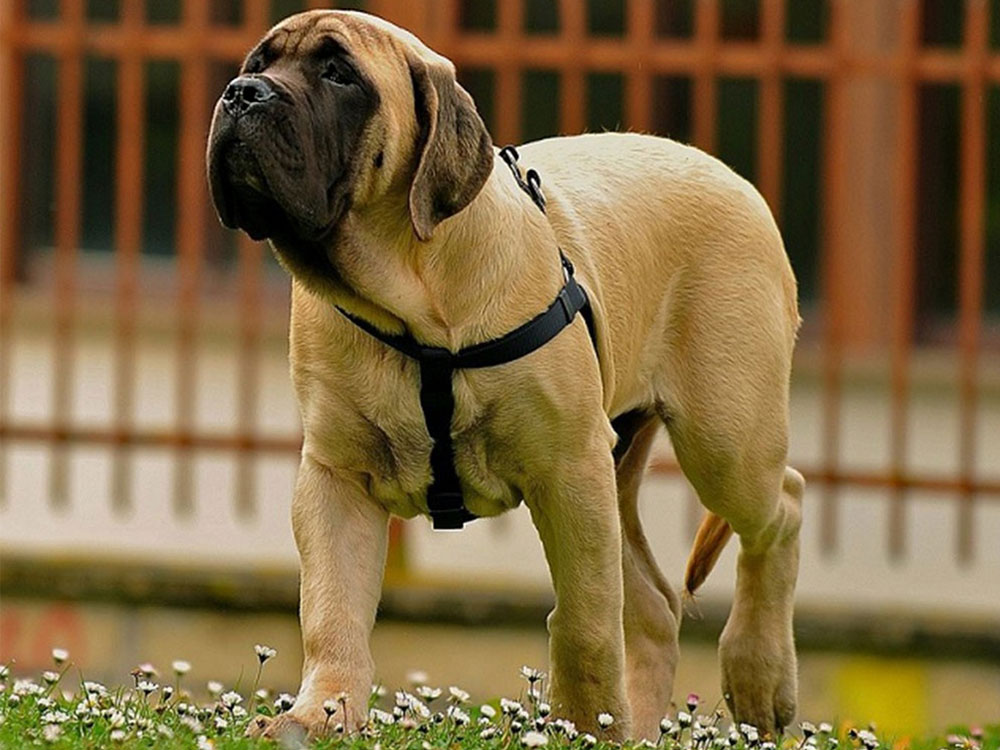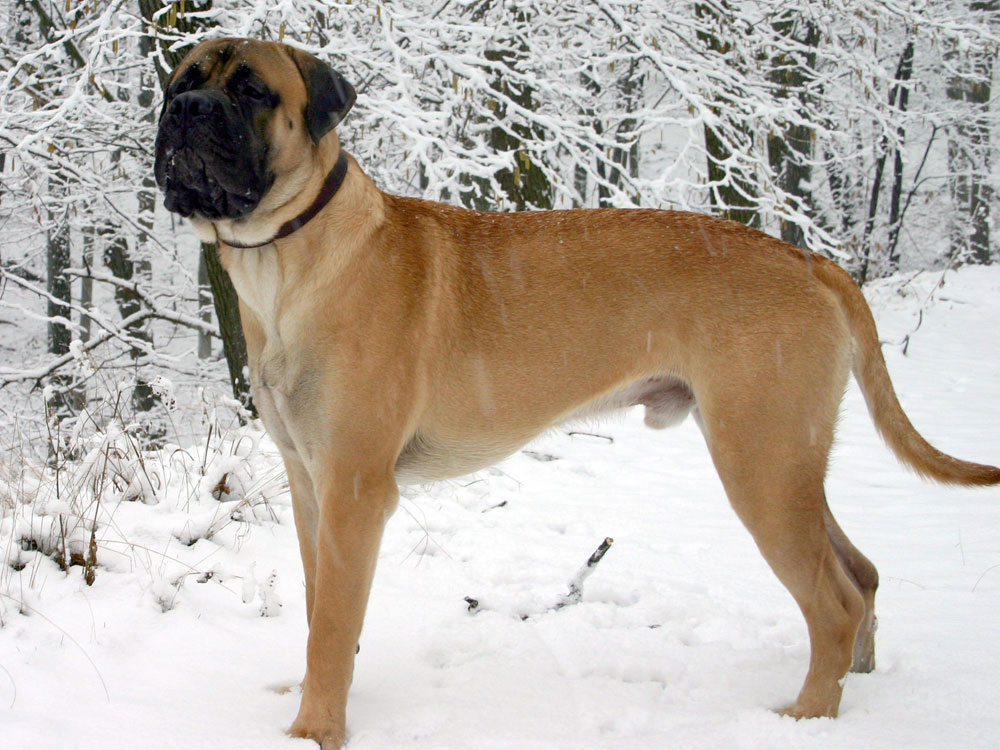
Mastiff Breed Pictures
Vital Breed Stats
| Height: | 76 - 76 cm M | 70 - 70 cm F |
| Weight: | 68 - 133 kg M | 54 - 82 kg F |
| Breed Group: | Utility Dog Group |
| Life Expectancy: | 10 - 13 years |
| KC Registered: | No |
Breed Characteristics
| Size: |  |
| Grooming: |  |
| Exercise Level: |  |
| Trainability: |  |
| Barking Level: |  |
| Good with Children: |  |
| Good with other pets: |  |
| Affectionate: |  |
| Protective: |  |
| Cost to Keep: |  |
Give a thumbs up if you love the Mastiff

0
More About the Breed
History
The Mastiff is one of the most ancient breeds, believed to have come from Molassers. In fact, Mastiff-type dogs were seen in ancient bas-reliefs and other artefacts uncovered by archaeologists from different ages such as Babylonian, Egyptian and classical Greek civilizations. They were used as guard and war dogs and for entertainment, made to fight against lions and other wild animals.
It is believed that the modern Mastiff breed we see today came from the huge dogs that were used as guard dogs in estates during the 15th century, particularly Lyme Hall. The breed’s numbers significantly dropped during the two World Wars and during the time when bullbaiting, bearbaiting and dog fighting were banned.
Mastiffs were saved from extinction thanks to the breeding efforts of enthusiasts and breeders around the world. Through careful selective programmes, the breed’s numbers gradually increased and the quality of the Mastiffs produced improved in the process. The Mastiff is recognised by major registries worldwide, including The Kennel Club under the Working Group.
Appearance
Weighing 118 to 250 pounds and standing 70 to 90 centimetres at the withers, the Mastiff is a large dog with a powerful and well-knit frame, which gives off an imposing appearance. Its head is large and square and its skull is broad. Its flat forehead becomes wrinkled when it is alert or curious. It also has well-developed cheeks, dark hazel eyes, small and thin ears that are set wide apart, a broad nose with open nostrils, an extremely strong jaw, and powerful teeth.
The Mastiff’s coat is close lying, with a coarser texture in the shoulder and neck. According to KC standards, the accepted colours are apricot, brindle and fawn.
Grooming
Grooming-wise, this breed is pretty low maintenance, only requiring weekly brushing with a rubber hound glove and wiping using a chamois cloth. Its wrinkles must also be cleaned to avoid bacterial infections. Bathing can be done as needed when it is physically dirty and starting to have that doggy smell. It is worth noting that the Mastiff sheds continually throughout the year, quite heavily during spring and autumn so prepare for more frequent brushing. Also get ready to clean the furniture and sweep the floor more often because there will be more hair during this time.
Other grooming aspects that get overlooked are tooth brushing, nail clipping and ear cleaning. Because they are often disregarded, a lot of dogs suffer from preventable health issues such as tooth and gum disease and ear infections.
Temperament
The Mastiff’s general appearance is enough to scare away intruders especially those that are unfamiliar with the breed. However, it is actually a gentle giant that is a great family companion. It is affectionate towards family members and builds strong bonds with them. As such, it cannot be left alone as it craves for human interaction. It is better off in households where one family member always stays at home.
Mastiffs often demonstrate polite aloofness since they would rather keep their distance around strangers than show aggression. However, as sensitive dogs, they are quick to come to their owner’s rescue when the need arises. Aside from being great guard dogs, they are also alert watchdogs.
Although it is laidback by nature, the Mastiff is not recommended for families with very young children and first-time owners because it can prove to be challenging considering its size, as well as the work needed to train and socialise this imposing dog. Regardless of the age of children, adults should always supervise interactions and teach them to treat dogs with kindness and respect. When it comes to other pets, Mastiffs can get on well with other dogs, cats and small pets especially those they grow up with. However, be cautious with the neighbour’s cats and small animals to be safe.
Intelligence
Nutrition
- Senior and less active: up to 3,100 calories daily
- Typical adults: up to 3,500 calories daily
- Physically active/working dogs: up to 3,900 calories daily
Feeding
Health
Exercise
Cost of Ownership
If you have set your eyes on buying a Mastiff, prepare to pay around £700 to £1,200 for a well-bred pedigree puppy. Insurance coverage, which is a safety net in case your pet dog needs to be hospitalized, costs £60 to £125 a month. The price of a pet insurance depends on the level of coverage, your dog’s health and your location.
Food costs will be around £80 to £90 monthly considering that it is a large dog with a big appetite. Veterinary trips can set you back £1,500 in a year for consultations, vaccinations and boosters, and flea and worm treatments. Preventive care may sound too costly but it is important to ensure your dog stays healthy and lives according to its potential lifespan.
A rough estimate in raising and caring for a Mastiff will be around £150 to £210 a month. There could be other costs along the way not included in our estimate such as initial basic equipment and medical expenses not covered by your insurance.
Is a Mastiff Right for You?
- The Mastiff is a gentle giant that has protective and guarding abilities.
- It forms a strong bond with owners and tends to suffer from separation anxiety.
- It has low grooming needs and moderate exercise requirements.
- This breed needs to be trained from the get-go and socialised as soon as vaccinations are complete.
- This large dog is expensive to own.
